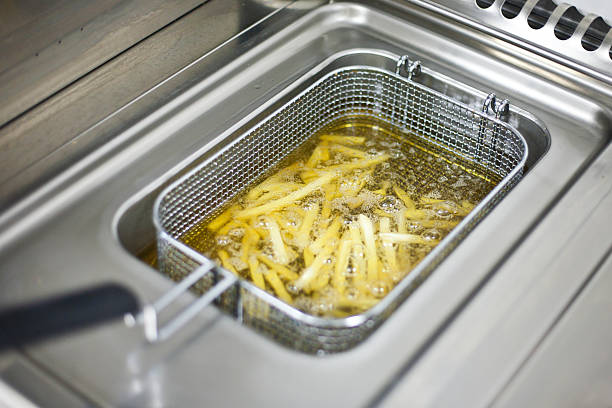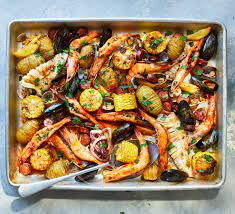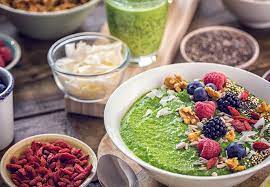Nature has changed gears. New neighbours are welcome in the garden, thanks to sunny days and cool nights. Fall crops are hardy and slow-growing and can be just as productive as summer fruits.
This article will show you how to make the most of the fall harvest’s dazzling bounty. Some foods are produced from coast to coast, while others are regional. While many of these foods are available at your local supermarket, the ones grown in your backyard will be most readily available and freshest.
These delicious recipes might inspire you to plant a garden of your own. You might be surprised at how much it can do for you. Lewis Grizzard, a Southern humorist, said it best: “It’s hard to think anything other than pleasant thoughts while eating a homemade tomato.”
Apples
If you tell a chef that there’s an app for it, they might think “apple.” Many apple varieties can be used for everything, including snacks and stuffing. Multitaskers are the most well-known and easy to find. They can be used for baking and eating. These include McIntosh, Golden Delicious and Rome.
Depending on your location, these regional specialities may also be available at local farmers markets and pick-your-own orchards.
- Arkansas Black. It is named for its dark red colour and home state. It tastes tart and crunchy fresh and can withstand cooking.
- Grimes Golden. As the name suggests, this West Virginia native, bright yellow, is sweet and slightly spicy. It’s great for snacking as well as desserts.
- Northern Spy. This crisp, juicy variety is not only beautiful but also delicious.
- Honeycrisp. It was developed in Minnesota in 1970 as a sweeter variety of older, sharper “heirloom” or “antique” varieties. Its bright red colour and crunchy texture add appeal to fruit salads.
- Winesap. This heirloom is sweet and tart, similar to dry wine. It has been called a cider Apple since the nineteenth century.
No matter what variety of apple you choose, they should not have any bruises or mushy areas. As they mature, larger apples will be more firm and soften faster. Be sure to look for a distinctive colour. Don’t be discouraged by any brown spots. For immediate consumption, keep them at room temperature. They will last for about two weeks if kept in a plastic bag.
Pears
You probably think of pear in one of three ways: Anjou, Bartlett, or Bosc. These produce-department staples can be used for all purposes, with colours ranging from deep red to light green to golden. They can be eaten fresh or cooked due to their firm texture. They are excellent for canning.
Some lesser-known varieties have special uses.
- Asian. Their round shape and crisp texture are often called apple pears because of their round shape and crisp texture. They are sweeter than Anjous, Barlett’s, and other European varieties. This makes them a favourite choice for fresh desserts. Asian pears can be picked ripe, which is different from European pears.
- Comice. These are squat and rosy gold, with soft, creamy flesh better for fresh eating than cooking. These are great for pairing with Cheese.
- Seckel. Because of its extraordinary sweetness, this pear is also known as a sugar pear. That, along with their fit-in-the-palm-of-your-hand size, makes them just right for snacking.
Many pears are still not fully ripe at the time you buy them. Except for Yellow Bartletts, which turn from green to golden, most pears don’t change in colour as they age. Grocers recommend that you “check the neck.” The pear should give if the stem is lightly pressed. If not, allow the pear to set for a few days at room temperatures and perform the daily “neck check”.
Grapes
There are three main types of grapes: red, green (also known as white), and black (or blue-black). There are both seeded varieties and seedless varieties. However, the latter group is more common in supermarkets. The green Thompson grape and its hybrid offspring Flame are the most popular. These grapes are sweet but not too sweet. These grapes are more personal and will swallow or spit out some seeds.
- Concord. It is a black-seeded or seedless variety mainly found in the northern New York area and Southern Ontario. It has a distinct taste of jelly and juice. Concords are slip-skins, which means you can squeeze out the berry from the skin and throw it away.
- Muscat. This green grape has a spicy, fragrant taste and aroma. American muscats are natives of sunny, southern Italy and France. They thrive in sunny Southern California.
- Muscadine. Scuppernong, a seeded slip skin native to the Southeastern United States, is bronze. These large, fruity grapes are more likely to grow in small clusters than bunches.
Look for ripe berries with supple stems when buying grapes. Do not be discouraged if the grapes appear matte or powdery. This is natural. The bunch isn’t being handled very intensively because of its presence.
Grapes can be enjoyed fresh, either in salads or out-of-hand. They can be frozen and healthier alternatives to high-sugar or high-fat desserts. They also make great pies and jelly.
Persimmons
Persimmon trees thrive in warm climates. It is most likely to find its fruit in the Sunbelt state. There are two main kinds of persimmons, and it pays to be familiar with each.
The Fuyu is simple enough. It is small and pales in colour, and is about the same size as a miniature decorative pumpkin. The Ripe Fuyus are firm and have a mild sweet-tart flavour.
The Hachiya is a clever joker. Unripe Hachiya feels and looks like a large, ripe Fuyu but has the mouth-puckering acidity that of a lemon. A ripe Hachiya on the other side looks and feels more like a deep red tomato, which is soft and squishy. It is only then that it can be eaten. Its flesh is sweet and creamy, with a smooth texture that almost resembles cream.
Fuyus can either be eaten whole or in a fruit salad. You can best eat the Hachiya with a spoon. Mashed Hachiyas are sweeteners and colours for cookies, cakes, and quick bread.
The next food reminds us while red and golden may be autumn colours, greens can still be considered garden hues.
Leafy Greens
Some leafy greens are more able to withstand cold weather than others. Temperatures below freezing can slow down plant metabolism. Maintaining plants with fewer carbohydrates, which is sugar, results in higher sugar reserves. This results in sweeter winter leaves than summer.
If you don’t like the greens in July, you might enjoy them in October. Take this example:
- Spinach. The semi-savoyed and savoury varieties of Spinach are those that thrive in cooler temperatures. Their crinkly and frilled leaves identify them.
- Chard. The most common type of chard is white-stemmed, but you may also see stems in bright yellow, deep pink, and fuchsia. You can also eat the stalks.
- Collards. It’s a smoky-tasting, round- or shell-shaped green. It’s a staple in down-home Southern cooking. The cooking liquid (“potlikker”) can make a soup or soak up cornbread.




